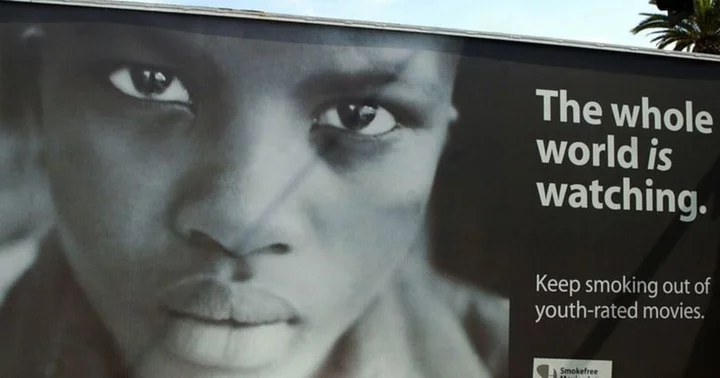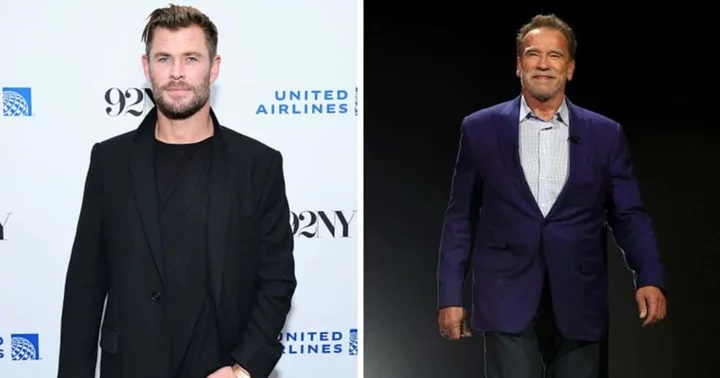LOS ANGELES, CALIFORNIA: The youth is impressionable enough for media to influence their habits and proclivities. So it is no surprise that a study shows how they get profoundly (and adversely) influenced by some of the folks they view as the epitome of coolness — big movie stars who smoke, both in real life and on-screen.
A recent study has shown that exposure to onscreen smoking in movies has led people to pick up the nicotine stick at a younger age. This influence extends beyond reel life as some actors’ real-life smoking addiction is also affecting youngsters.
In recent years, a surge has been noticed in photos of young actors lighting up in public spaces. Most recently, Hollywood star Ben Affleck faced considerable wrath after being captured with a carton of cigarettes while picking up his kids from skateboarding in Los Angeles.
Reflecting on the issue, Dr Stanton Glantz, a professor and director of the University of California, told the NY Times “There’s a dose-response relationship: The more smoking kids see onscreen, the more likely they are to smoke.”
“The evidence shows it’s the largest single stimulus,” for smoking, he said, adding “It overpowers good parental role modeling, it’s more powerful than peer influence or even cigarette advertising.”
The rise of smoking in movies
A study released by the Centers for Disease Control and Prevention has shown that there was a 72% increase in tobacco use in movies between 2010 and 2016.
During this period, 6 of every 10 PG-13 movies (56%) showed smoking or other tobacco use, according to the study.
The CDC’s study was based on data from 'Thumbs Up! Thumbs Down!', a project that analyzes tobacco content in movies under the non-profit Breathe California.
The data was uploaded on the website SceneSmoking.org, which lists the number of tobacco incidents in each movie, according to the Times.
As per the website, there were 8,333,295 tobacco incidents in 2016’s '10 Cloverfield Lane' while La La Land, also rated PG-13, had 34,936,834 tobacco impressions using cigarettes.
PG-13 films had a notable increase of 43% between 2010 and 2016, while the total number of tobacco occurrences in R-rated films increased by 90%.
In 2016, 67% of R-rated movies featured tobacco incidents, while 26% of “youth-rated movies” (G, PG or PG-13) showed the same.
How is the rise in 'smoking incidents' in movies affecting the youth?
The surge in smoking incidents in movies has worried health professionals, who warned that the frequency with which young people see tobacco use in movies affects how inclined they are to start smoking themselves.
The CDC states that young kids who are heavily exposed to smoking in movies have a two- to three-fold increased risk of starting to smoke compared to other young people who are not as exposed.
In spite of the rise of tobacco incidents on screen, teen smoking has steadily declined since 2011. The number of teens who said they used tobacco dropped to 3.9 million in 2016 from 4.7 million the year before, according to the CDC.
Meanwhile, Dr. Glantz and other researchers claim that heavy tobacco incidents make movies an “environmental toxin,” a factor endangering children.
“There’s no excuse for continuing to have smoking in movies that are rated to be sold to kids, and so the policy objective we have is there should be no smoking in movies that are rated for kids,” he said, adding “The studios have it in their power to fix this with a phone call.”
What steps can be taken to stop increasing tobacco use in movies?
Public health organizations have been collaborating to encourage filmmakers to remove tobacco usage from their films in an effort to combat the surge in tobacco incidents.
They have developed four "Smoke-Free Movie Policies," which have received international support from health authorities, according to the Truth initiative.
Before each movie including tobacco incidents, theaters, and studios should mandate the airing of a persuasive anti-smoking commercial.
In the closing credits, there should be a certification stating that the production personnel was not compensated for using or showing tobacco products.
Tobacco brand identification or imagery should be eliminated from films.
Any film that does show or imply tobacco use should be rated “R,” except if it clearly reflects the consequences of tobacco use or is necessary for historical accuracy.
The US Surgeon General has claimed that "the adoption of such policies would contribute to a reduction in adolescent smoking behavior."









